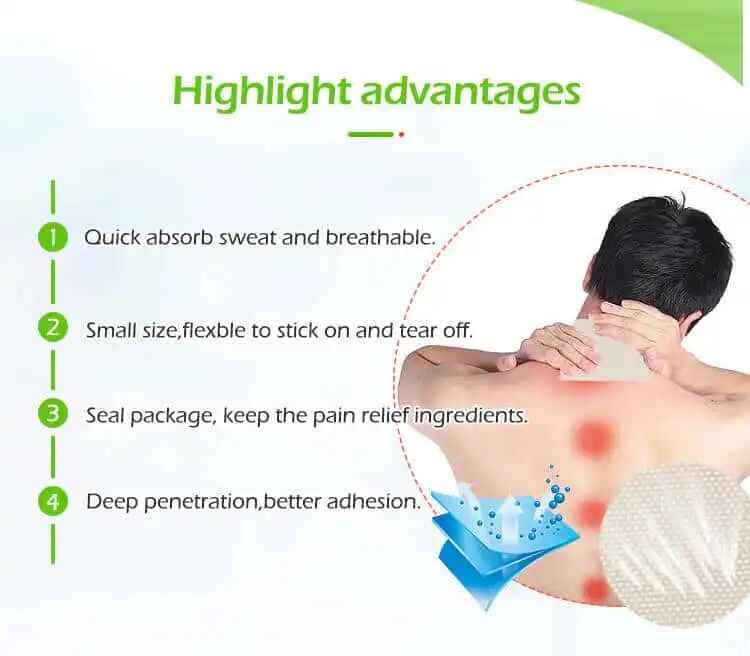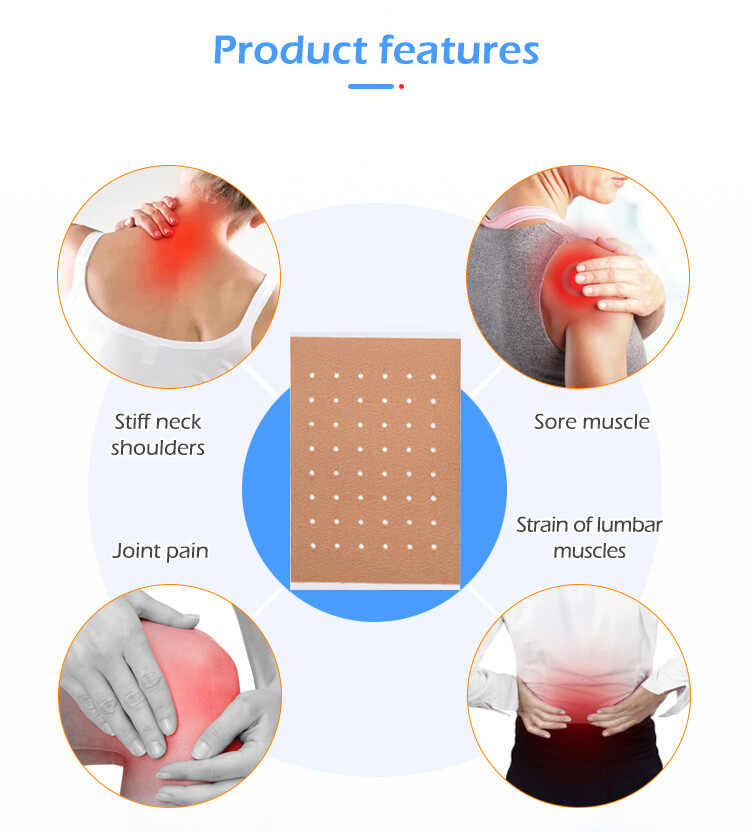Common Challenges and Solutions in Sports Pain Patches OEM Collaboration
In the fast-growing health and wellness market, Sports Pain Patches OEM partnerships offer incredible potential for B2B clients aiming to launch or expand their pain relief product lines. However, working with a Sports Pain Patches Manufacturer is not without its hurdles. Challenges ranging from communication gaps to formulation mismatches can jeopardize production timelines, quality, and market success.
This article explores the most common issues encountered in Sports Pain Patches OEM collaboration—and provides practical, results-driven solutions. Whether you're sourcing Custom Sports Pain Patches, launching a new line of Private Label Sports Pain Patches, or selecting a reliable Sports Pain Patches Supplier, understanding these dynamics will give your business a competitive edge.

1. Misaligned Expectations Between Brand and Manufacturer
Challenge:
Miscommunication about product specifications, timelines, or market goals often leads to delays, subpar samples, or unmet performance expectations.
Solution:
Set up a detailed OEM agreement that outlines goals, timelines, ingredient requirements, and packaging specifications.
Choose a Sports Pain Patches Manufacturer that offers dedicated account managers to maintain transparency and alignment.
Use clear documentation and mockups for Custom Sports Pain Patches to ensure everyone is on the same page.
Pro Tip: Request a detailed project roadmap with milestone checkpoints.
2. Quality Control Inconsistencies
Challenge:
Inconsistent patch thickness, adhesive quality, or active ingredient delivery can harm your brand's reputation and lead to product recalls.
Solution:
Partner only with a Sports Pain Patches Supplier that is GMP-certified, and ideally also ISO, FDA, or CE compliant.
Implement a third-party auditing system to inspect batches before final shipment.
Run comparative tests on Private Label Sports Pain Patches samples before large-scale production.
Pro Tip: Insist on receiving a Certificate of Analysis (COA) for each production batch.
3. Limited Customization Options
Challenge:
Some OEM manufacturers offer only generic templates, limiting your ability to develop truly differentiated Custom Sports Pain Patches.
Solution:
Choose a Sports Pain Patches Manufacturer with R&D capabilities, allowing ingredient customization, scent options, and advanced delivery systems.
Inquire about MOQs (Minimum Order Quantities) for customization, and negotiate small batch trials before committing to full production.
Pro Tip: Prioritize manufacturers who provide flexible formulation services tailored to specific athlete or sports market needs.
4. Communication Barriers in International Collaborations
Challenge:
OEM collaborations often involve cross-border interactions, which can be hindered by time zone differences, language barriers, and cultural misunderstandings.
Solution:
Select a Sports Pain Patches OEM with bilingual project managers or a local sales representative in your region.
Use digital collaboration tools such as Slack, Zoom, or Trello to streamline updates and feedback.
Schedule regular review meetings to ensure objectives are still aligned.
Pro Tip: Establish clear escalation procedures for critical issues to avoid production delays.
5. Regulatory and Compliance Uncertainties
Challenge:
Differences in regulatory standards between regions (e.g., FDA in the US, CE in Europe) may cause unexpected compliance problems during market entry.
Solution:
Work with a Sports Pain Patches Supplier experienced in international regulatory processes.
Request regulatory documentation (such as MSDS, test reports, and product registrations) upfront.
Ensure that your Private Label Sports Pain Patches meet labeling and ingredient standards for each target market.
Pro Tip: Hire a regulatory consultant or leverage the OEM’s in-house compliance team to handle documentation.
6. Unclear Branding and Packaging Guidelines
Challenge:
A common roadblock is the disconnect between the brand's vision and the OEM’s execution of logos, colors, labels, or box designs.
Solution:
Provide brand style guides with fonts, colors, logo positioning, and print quality expectations.
Ask your Sports Pain Patches Manufacturer for digital proofs and physical mockups before mass production.
Ensure packaging materials are high-quality and meet retail standards if your products will appear on shelves.
Pro Tip: Choose an OEM that offers value-added services like private label design, custom packaging, and barcode integration.
7. Delays in Production and Shipping
Challenge:
Production bottlenecks or logistical issues can lead to stockouts, affecting your brand’s reputation and revenue.
Solution:
Maintain buffer stock and set realistic reorder points.
Choose a Sports Pain Patches Manufacturer with proven lead-time performance and global shipping capabilities.
Ask about backup plans and raw material contingency strategies.
Pro Tip: Negotiate lead time penalties in your OEM contract to safeguard your timeline.
8. Lack of Innovation from OEM Partner
Challenge:
Some OEMs may stick to outdated technologies and fail to keep pace with evolving market needs, limiting your product's competitiveness.
Solution:
Partner with an innovation-driven Sports Pain Patches OEM that invests in R&D, material science, and delivery systems.
Ask to review their portfolio of Custom Sports Pain Patches to assess how advanced their solutions are.
Collaborate on exclusive formulas or smart patches with digital integration.
Pro Tip: Opt for manufacturers that regularly attend industry expos or publish updates on technological improvements.
9. Intellectual Property Concerns
Challenge:
Brands worry that proprietary formulas or designs for Private Label Sports Pain Patches may be reused or leaked by the OEM.
Solution:
Sign non-disclosure agreements (NDAs) and confidentiality clauses before discussing any product details.
Use contracts to clearly define IP ownership.
Partner with OEMs that have a transparent track record of IP protection and no history of conflicts.
Pro Tip: Retain legal counsel familiar with OEM agreements and international trade laws.
10. Post-Production Support Gaps
Challenge:
Once the product is delivered, some OEMs offer little to no after-sales support, affecting product updates or defect handling.
Solution:
Choose a Sports Pain Patches Supplier that offers post-production support, customer service training, and marketing insights.
Discuss return policies and defect handling procedures in advance.
Set expectations for continued collaboration and next-gen product development.
Pro Tip: Evaluate long-term collaboration potential, not just cost-per-unit pricing.
Conclusion
While OEM partnerships in the sports pain relief sector present vast opportunities, they also come with real-world challenges. Whether you're creating Custom Sports Pain Patches, expanding with Private Label Sports Pain Patches, or working with a new Sports Pain Patches Supplier, understanding and anticipating these issues is crucial.
By selecting a transparent, experienced, and innovation-driven Sports Pain Patches Manufacturer, you can overcome common OEM pitfalls—and bring to market a high-quality, differentiated product that athletes and active consumers trust.
Related Questions and Short Answers
Q1: What should I look for in a Sports Pain Patches OEM partner?
A: Look for compliance certifications (GMP, FDA, ISO), R&D capabilities, customization flexibility, and transparent communication.
Q2: How can I avoid delays in my OEM collaboration?
A: Use detailed agreements, maintain clear timelines, and work with manufacturers with strong production capacity and contingency planning.
Q3: Can I customize the ingredients in my Sports Pain Patch?
A: Yes. A quality Sports Pain Patches Manufacturer should offer a wide range of active ingredients including menthol, capsaicin, CBD, and herbal extracts.
Q4: What makes Private Label Sports Pain Patches different from custom ones?
A: Private label products use the OEM’s standard formulation but carry your brand. Custom patches involve tailored formulations and delivery systems.
Q5: How can I ensure product consistency across batches?
A: Insist on batch testing, COAs, and strict QC processes from your Sports Pain Patches Supplier.
Q6: Is it risky to manufacture overseas?
A: Not necessarily, as long as the overseas Sports Pain Patches OEM has a proven track record, robust compliance measures, and reliable communication.
Ready to build a high-performing, compliant, and profitable pain patch brand?
Choose a Sports Pain Patches OEM partner that turns these challenges into opportunities—and equips your business to lead in the competitive sports recovery market.






